Where the Wild Things Go: Exploring Wildlife Corridors Along America’s Trails
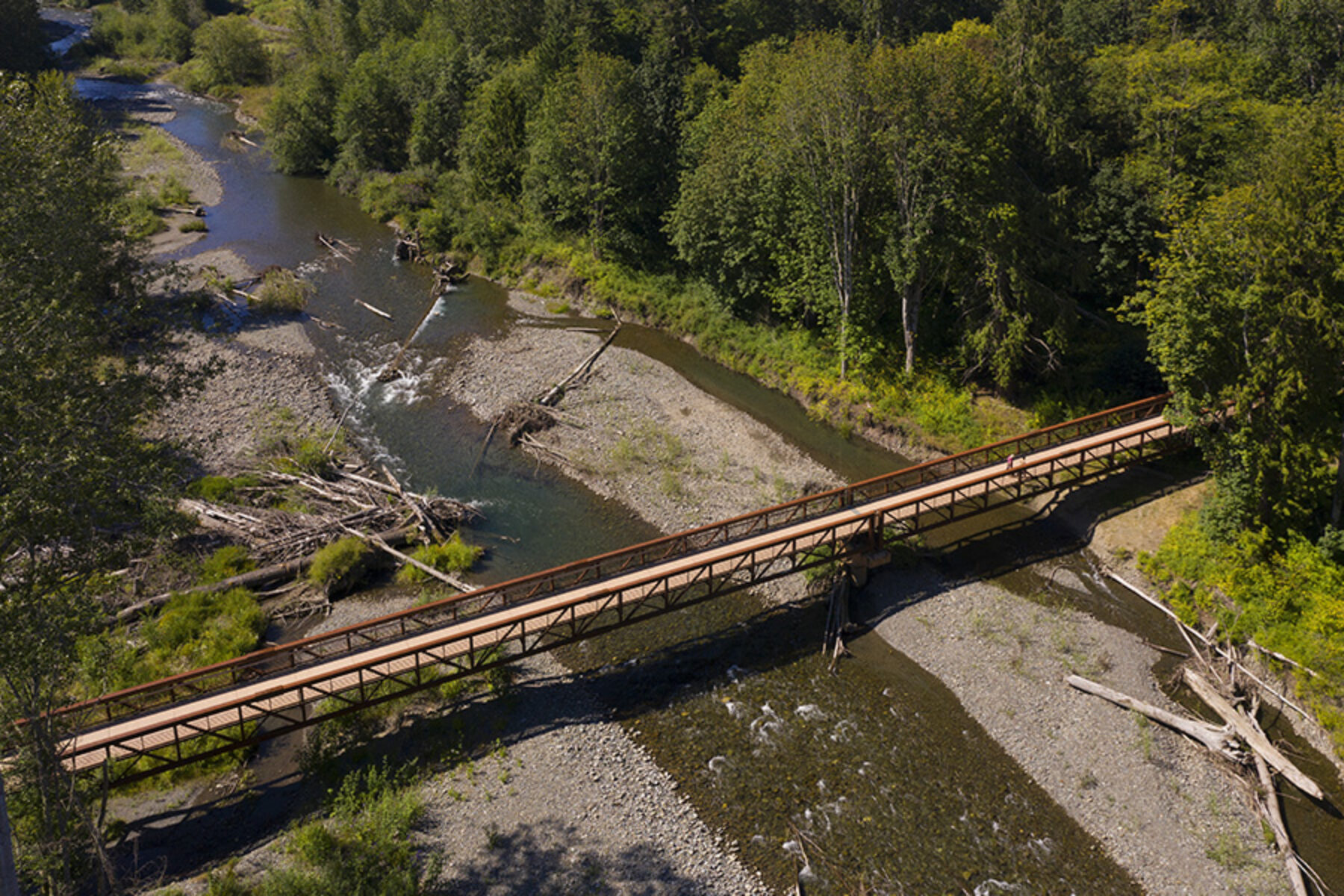
Wildlife corridors, green passageways that join one natural landscape to another, allow animals to migrate between habitats, access critical resources and escape adverse environmental conditions. Often serving a dual purpose for both wildlife and people, they can improve the human experience as well. Here, we examine the different forms these corridors can take in America, and the work happening to create and protect them.
When the Jamestown S’Klallam Tribe of northwest Washington removed a concrete dike along the Dungeness River near Sequim in 2022, not only was a grievous environmental harm corrected, but the tribe also seized the opportunity to provide a connection to a vast trail network.
Erected in the 1960s, the dike succeeded in directing the water’s flow away from human development, but it drastically restricted the river’s natural floodplain, and its effect was devastating to the health of local salmon that had relied on the floodplain for spawning and shelter.
The tribe replaced the dike and a deteriorating bridge over the Dungeness River with environmentally friendly, noncorrosive materials, and extended the bridge to a length of more than 1,000 feet to accommodate for substantial flooding events. They placed downed native trees in the waterway for use as salmon habitat and connected the entire project to the 135-mile Olympic Discovery Trail, which crosses the Olympic Peninsula.
After more than 50 years, the Dungeness River ran freely. “The Dungeness is shallower now,” said Randy Johnson, the habitat program manager for the Jamestown S’Klallam Tribe. “Instead of being restricted into the 150-foot channel [imposed by the dike], the river can spread out in rainy seasons as much as 1,000 feet. That’s natural, and that’s what salmon need.”
It’s too soon to know exactly how the Dungeness’ salmon population will respond to the waterway restoration, but Johnson has seen this scenario before with Dungeness reclamation projects in 2007 and 2015. “We had instant American Serengeti,” Johnson said of the results, describing an increase in healthy salmon, as predicted, but also a hefty uptick in sightings of waterfowl, beavers, raccoons, bobcats and more.

What Johnson and members of the Jamestown S’Klallam Tribe didn’t expect was the public’s positive reaction to this most recent river restoration. In 2023, an average of more than 900 people per day—333,000 throughout the year—crossed the new bridge and traveled on the adjoining Olympic Discovery Trail.
“This is a river-worthy, salmon-friendly bridge that will also be flood resistant,” said Johnson. “And it turns out that people love it, too.”
A Way Through the Wilderness

For decades, land managers have fallen largely into two camps: those who focus on developing recreational areas geared toward the interests of humans, and those who concentrate on preserving wildlife habitat. But as the Dungeness River project demonstrated, creating wildlife corridors often results in improved green spaces for humans as well.
Jeremy Romero, the regional connectivity coordinator for the National Wildlife Federation (NWF), devotes his career to thinking about wildlife corridors, which he describes as green pathways that join one natural landscape—such as a riverbed, wildlife preserve or municipally managed seashore— to another. These natural passageways allow animals to migrate between habitats for breeding purposes, to access food, water and shelter, or to escape extreme weather conditions.
“Sometimes people talk about how intact a habitat is,” said Romero. “I like to ask, ‘How fragmented is it?’ We at the NWF focus on the matter of mitigating fragmentation, of reducing barriers for the wellbeing of wildlife.”
Human-caused barriers between habitats arise in the form of busy roadways, insurmountable fencing and densely occupied residential or commercial developments. Wildlife corridor designers can bridge or sidestep those hurdles by building nonmotorized highway over- and underpasses, removing unnecessary fences and other barricades, reengineering dams, and ensuring that neighborhoods and industrial parks are encircled with pathways planted with native trees and wildflowers.

Infrastructural improvements can often represent precisely the kind of developments that trail users desire as well. As a result, land administrators are increasingly working alongside trail developers to build dual-use corridors.
The Florida Wildlife Corridor, which was created by the Florida Legislature in 2021, connects nearly 18 million acres of habitat across the entire state—from the Everglades to the panhandle. The authorizing legislation included $400 million to preserve habitat that was deemed key to the survival of multiple species, including alligators, Key deer, black bears and the endangered Florida panther.

Additional monies were secured in 2023, when another $200 million was allocated in conjunction with the creation of the SUN Trail Network. Currently, the Florida Wildlife Corridor includes 6,300 miles of recreational trails, most notably the 1,500-mile Florida National Scenic Trail. Both human and wildlife users have been found to benefit from green underpasses beneath roadways, improved pathways through swampland and around suburban areas, and bridges.
“We’re big proponents of creating shared green spaces,” said Alex Freeze, collaborative conservation manager for the Florida Wildlife Corridor Foundation.
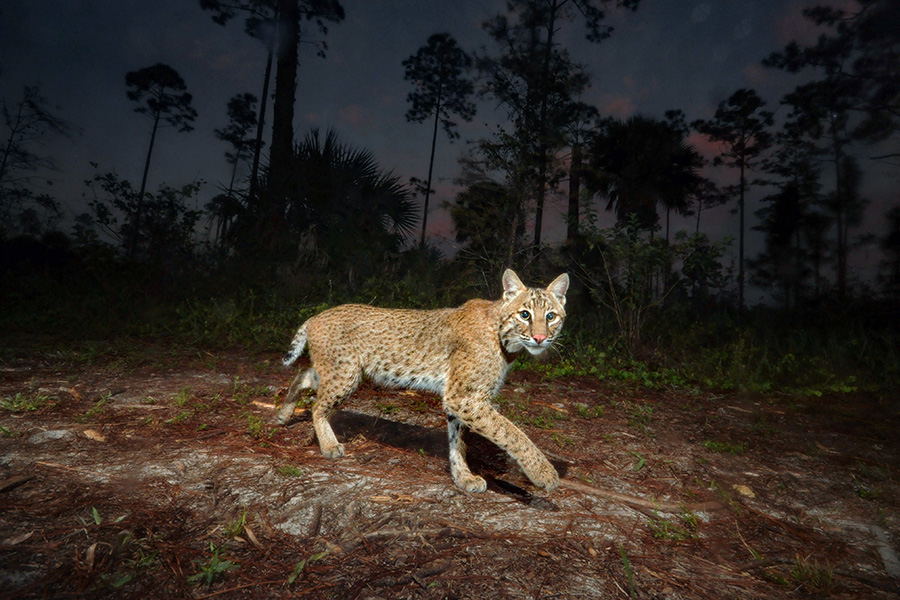
Sharing green spaces doesn’t necessarily mean that wildlife and humans utilize precisely the same footpaths at precisely the same time of day, she added. There are times that landscape managers opt to subdivide human and wildlife areas to minimize the poor health, low birth rates or aggressive animal behavior that may result if wildlife appears stressed or if human/animal encounters occur with too much frequency.
“We’re constantly asking the questions, ‘Which natural areas are perfect for trails?’ and ‘Which areas should be set aside as wildlife refuges?’” explained Freeze. “But honestly, it’s easier for us to get public support and funding for wildlife corridor projects when we can also show benefits to humans.”
“Anything we can do to reduce animal/vehicle collisions is good for wildlife, but it’s good for humans too.”
— Jeremy Romero, Regional Connectivity Coordinator, National Wildlife Federation
Legislating Conservation
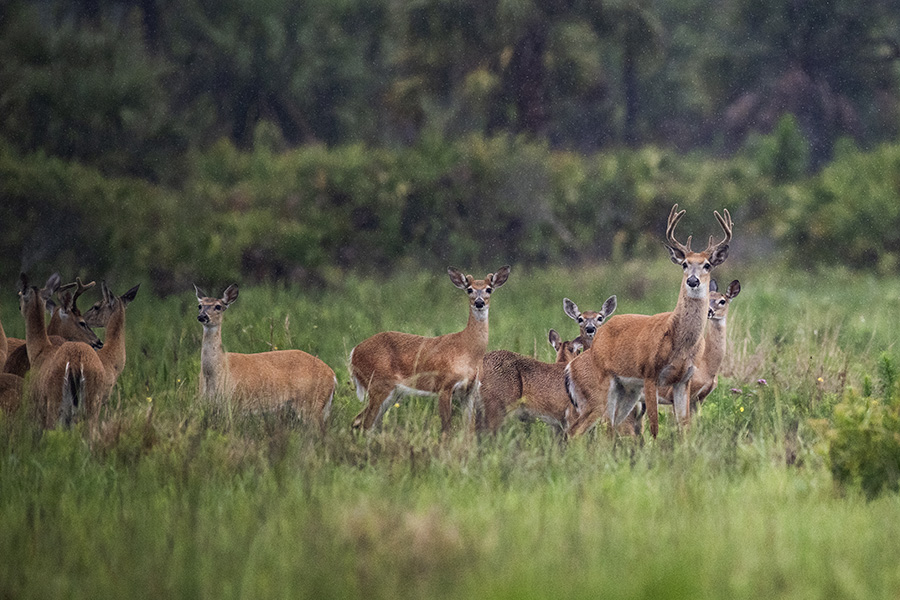
Increasingly, state governments across the country are passing legislation to create interconnectedness between otherwise divided green spaces. The intent is to ensure healthy populations of wildlife for future generations, to improve human access into and across green spaces, and to reduce the incidence of animal/vehicle collisions.
The Florida Wildlife Corridor, for which lawmakers in the state unanimously passed Senate Bill 976 in 2021, is just one example of a state that cares so deeply about protecting interconnected natural areas that legislators are willing to codify conservation practices.
In California, Assembly Bill 2344—requiring the department of transportation to assess barriers to wildlife movement before launching new road projects—was signed into law in 2022. Likewise, in states ranging from Oregon and Utah to Massachusetts, state legislators have approved bills and allocated funds aimed at improving wildlife connectivity, largely in an effort to avoid animal/vehicle collisions.
“When we talk about wildlife connectivity, road crossings are a big component,” said Romero of the NWF. “Anything we can do to reduce animal/vehicle collisions is good for wildlife, but it’s good for humans too.” And each of those green corridors eases trail development that residents rely on for recreational use.
Fun Fact: The in-progress Wallis Annenberg Wildlife Crossing in Agoura Hills, California, will stretch 200 feet across 10 traffic lanes of U.S. Route 101 and rank as the world’s longest wildlife crossing.
Colorado ranks at the top of U.S. states that have invested in wildlife connectivity, with more safe animal road crossings than any other state. Simultaneous increases in both human and big game populations—the latter including elk, moose, bighorn sheep and pronghorn— resulted in threats to animal habitat and an upswing in animal/vehicle collisions. The state responded with an array of executive orders, joint resolutions, legislation and funding to address the issues.
Data published by the National Caucus of Environmental Legislators (NCEL) cites that collisions cost Americans $8 billion per year in damages, including emergency roadside assistance, medical costs and property damage. And that’s to say nothing of the cost to injured wildlife. According to the NCEL, as of early 2024, 14 states are considering legislation to enhance safe wildlife crossings.
“Wildlife managers sometimes have to be creative in finding ways to mitigate the different types of habitat fragmentation,” said Romero. “But there’s support for these kinds of policies. People who love nature want to know that their kids and grandkids will grow up enjoying the same wildlife that they see passing through their land today.”
Pathways Through the City
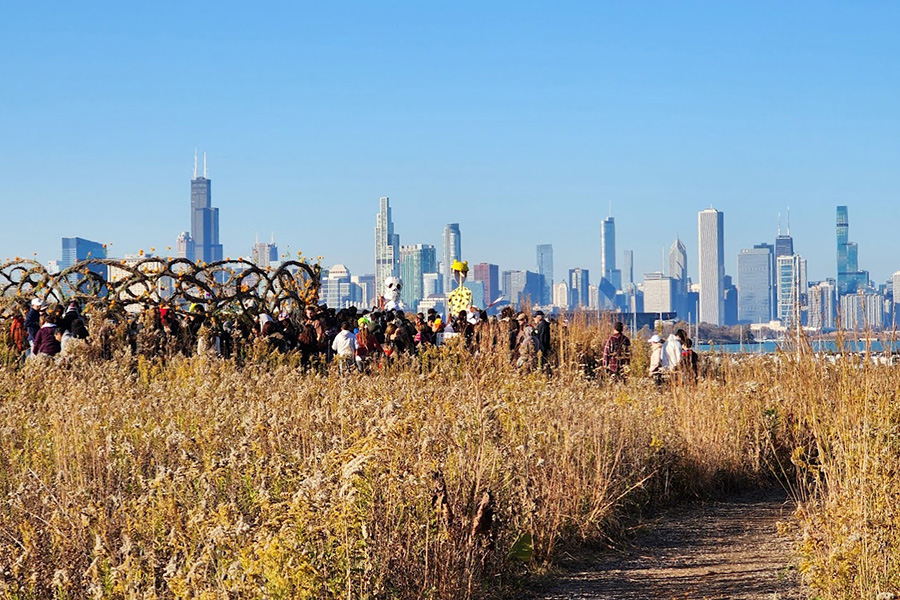
The preservation of wildlife habitat and the advocacy of safe wildlife crossings may be even more vitally important in America’s largest cities. Chicago occupies a critically important spot along the Mississippi Flyway, with its Lake Michigan shoreline providing key shelter, food and water for more than 230 species of birds as they circumnavigate the Great Lakes.
The creation of the Burnham Wildlife Corridor in 2014, which is bookended by the McCormick Bird Sanctuary in the north and the Burnham Nature Sanctuary in the south, established a safe, 100-acre space for migrating birds in the heart of the nation’s third-largest city. And through the heart of the BWC runs the 18-mile paved, multiuse Lakefront Trail.
Penstemon, prairie phlox, coneflowers and 10,000 trees, as well as the vast freshwater resources of Lake Michigan, join to create an environment that draws thousands of birds to the BWC. Monarch butterflies congregate in the fall, preparing for their epic migration to Mexico, and small mammals such as foxes, rabbits, squirrels and the occasional coyote reside within the landscape year-round.
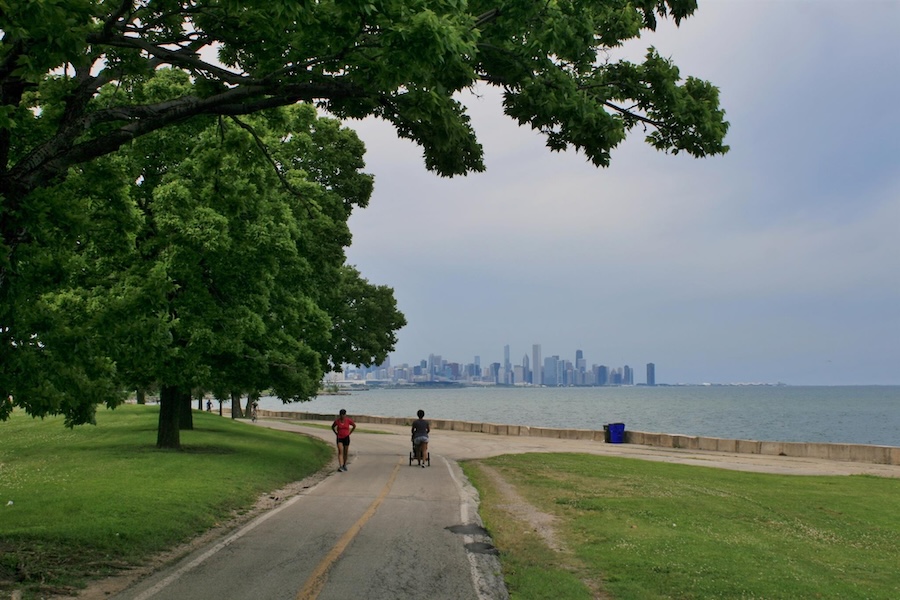
“Thousands of people use the Lakefront Trail every day for recreation and to commute to work,” said Ted Gross, program specialist in charge of the BWC for the Chicago Park District. “While they’re here, those people interact with the nature they’re passing through. They view the birdlife; they view the wildflowers. And they also get involved.”
René Diaz, program manager of Family Engagement and Community Partnership Development at Northeastern Illinois University, leads a team that connects Chicagoans to their landscape at the BWC’s La Ronda Parakata (Monarch Circle) gathering space. The circle is adorned with an art installation of butterflies. “We involve locals in plant and wildlife identification and environmental stewardship, and we have a traditional Dia de los Muertos celebration,” said Diaz, adding that residents learn of the long Latin American tradition of respecting nature and seeing their place within it.
“We see butterflies transforming and migrating through this space,” said Diaz. “We see birds migrating through this space, and that’s hugely symbolic for us. Because we are migrating through this space, too.”
Friction-Free Forests

Wildlife advocates recognize the benefits of pairing habitat preservation with trail development. But with more people hitting the trails year-round, said Karie Decker, director of wildlife for the Rocky Mountain Elk Foundation, it can unintentionally stress out wildlife, destroy nesting areas and interrupt breeding patterns.
Decker believes that humans traveling with respect for and awareness of their natural environment can make a positive impact. Here are a few tips for reducing human/animal friction in the wild.
- Always remain on the trail, as walking through brush can inadvertently destroy habitat and upset hidden nesting areas.
- Avoid trails known to lead into wilderness areas during mating, nesting and calving seasons.
- Keep a sizable distance between yourself and wildlife, particularly animals accompanied by juveniles.
- Avoid the use of motorized vehicles on trails.
Progress Through Persistence
In Los Angeles County, the La Cienega Pedestrian Bridge served as the culmination of a decade-long plan to complete the 13-mile Park to Playa multiuse trail, from the neighborhood of Baldwin Hills to the natural areas of Kenneth Hahn State Recreation Area, the trail-covered hills of Stoneview Nature Center and ultimately the community of Playa del Rey on the Pacific Ocean. Additionally, the Park to Playa trail leads users to the Ballona Creek Trail, which in turn connects to Los Angeles’ 22-mile Marvin Braude Bike Trail.
Standing in the way of the network’s completion was La Cienega Boulevard, which had impeded access for residents since the roadway’s construction in 1949. The six-lane highway had also fragmented habitat for the area’s wildlife. Crossing the busy highway was an extraordinarily high-risk proposition for any small creatures that dared try.
Connecting the green spaces involved the construction of the 235-foot-long pedestrian bridge, which reaches elegantly across the roadway, providing safe passage to pedestrians and cyclists. One lane of the span, which was completed in October 2020, serves as a wildlife corridor. A series of metal planters contains native plants designed to offer safe passage for lizards, snakes, squirrels, raccoons, skunks, rabbits and coyotes.
Michelle O’Connor, the trails planning section head for Los Angeles County Parks, said the wildlife corridor provided by the La Cienega Pedestrian Bridge will serve as a vital link between local habitats, an area of abundant and diverse wildlife that was effectively isolated by the urbanization of the Los Angeles Basin. She expects the corridor to prevent species isolation and inbreeding, and to lessen the unnatural dominance of predators.
If encouraging sound environmental management and promoting ecosystem health and resiliency have been paramount for public administrators—and they have, according to O’Connor—the process has required that administrators take a holistic perspective. Restoring fragmented habitats in a major urban center often entails the added burden of restoring degraded or contaminated lands if cities are to place them in the neighborhoods where they are most needed.

“There are numerous social, health and recreational benefits to the community by way of this pedestrian bridge and its trails,” said O’Connor. “Unfortunately, the high costs to build these heavily engineered structures can be prohibitive, and projects with multimillion-dollar price tags require steadfast dedication and persistence to raise the funds needed.”
But with so much at stake—for humans and for wildlife—there’s every incentive to do the work.
“We believe that humans can and should thrive in natural landscapes,” said Alex Freeze of the Florida Wildlife Corridor Foundation. “But we believe that wildlife can thrive right alongside them.”
This article was originally developed for the Spring/Summer 2024 issue of Rails to Trails magazine. It has been reposted here in an edited format. Subscribe to read more articles about remarkable rail-trails and trail networks while also supporting our work. Have comments on this article? Email the magazine.

Donate
Everyone deserves access to safe ways to walk, bike, and be active outdoors.
